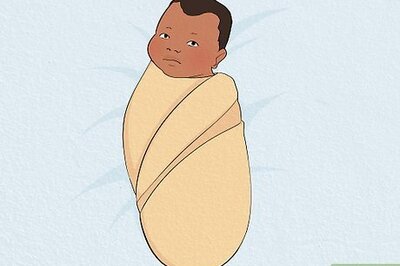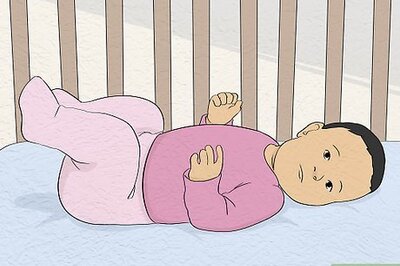
views
Naveen Patnaik has proved that he has built the Biju Janata Dal (BJD) into a sturdy and extremely efficient election winning machine that no party or combination of parties has got a measure of yet. All strategies, game plans and tactical understandings formulated and executed by the opposition parties have run up against an impregnable wall called the BJD.
It was, by no means, an easy election for Patnaik. For one thing, he was up against the might of an aggressive, relentless and resourceful BJP army equipped with money, material and all modern weapons of electoral warfare and led by the indefatigable duo of Narendra Modi and Amit Shah. For another, he was battling some inevitable anti-incumbency after 19 uninterrupted years in power.
That he managed to beat these seemingly insurmountable odds and came out trumps in an election where the BJP was sweeping the rest of the nation is a tribute as much to his own standing with the electorate as to his skills of political management. True, he did concede eight of the 20 Lok Sabha seats he won in 2014 and allowed the BJP to raise its vote share by as much as 16.49% over the share of votes it got last time. But that takes nothing away from this stupendous victory since he not only kept the loss of the vote share to less than two percent in the Lok Sabha, but actually raised his party's share in the votes cast for the Assembly polls held simultaneously, though only marginally, from 43.9% to 44.7%.
The final seat count of 12 Lok Sabha and 112 Assembly seats for BJD surprised not only those in the opposition, but many in his own party too.
Much of the increase in the BJP vote share actually came from the complete unravelling of the Congress, which managed the incredible feat of losing nearly over 12% of its vote share in 2014, from 26.38% in 2014 to just 13.79% in the Lok Sabha elections and by almost the same percentage point from 25.71% to just 16.10% this time. No wonder the party ended up with just nine seats in the 147-member Assembly and the lone Lok Sabha seat of Koraput where Saptagiri Ulaka pulled off a stunning – and completely unexpected – win against the BJD's Kaushalya Hikaka. Even the nine Assembly seats it won were more the result of the personal standing of the candidates rather than any liking for the party.
The sharp downslide of the Congress allowed the BJP to raise its vote share from a modest 21.88% to 38.37%, an incredible 17.49% jump, in the Lok Sabha and from 17.99% to 32.50% in the Assembly election, another huge leap of 14.51%, but still came second best. The party, which had boasted that it would form the next government in the state after the exit polls made flattering projections, had to settle for just 23 seats, less than one third of the 74 needed to get a majority in the 147-member Assembly and less than one fifth of the seats it had targeted under its ‘Mission 120’.
But the saffron party certainly performed much better than in the Lok Sabha elections. Its tally of eight seats fell well short of the 12-15 the exit polls had given it. But it was still a creditable performance by a party that had won just one seat last time. The party can also take heart from the fact that many of its candidates put up a spirited fight and lost by slender margins. A case in point was BJP national spokesperson Dr Sambit Patra, who came from nowhere to give Pinaki Mishra, the three-time MP, the scare of his life before going down by around 11,000 votes.
The numbers, both in terms of seats and vote shares, merely vindicated what was evident right through the elections: the people of Odisha, in a clear departure from their voting preferences in previous elections, had decided that "Modi at Centre, Naveen in Odisha" was their best bet.
With the elections out of the way, the talk has now shifted to the nature of relations between the BJD and the BJP, from now on. After a bitter, no-holds-barred campaign, both sides have indicated that they are ready to bury the hatchet and do business with each other. During the campaign, Patnaik had made it clear that his support would go to whichever side offers the 'best deal' to Odisha. With only one side (NDA) in a position to offer him any ‘deal’, the BJD supremo can be trusted to forge a working relationship that serves the interests of both sides. Given his equation with the Modi government over the last five years, it is unlikely that the BJD would sit in the opposition.
Patnaik is already 73 and this was virtually the last election he could have potentially lost. But now that he has stamped his authority in the state for the fifth time in a row, he looks set to go down in history as the only leader of a party in the modern era, who has never lost an election.
(Author is a senior journalist. Views are personal)

















Comments
0 comment